Hosted by
Urban
Books on urban design, urban planning, urban studies, urban mobility and spatial planning
All Books
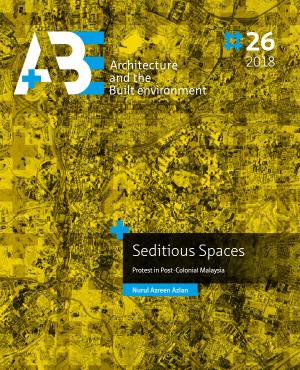
The title ‘Seditious Spaces’ is derived from one aspect of Britain’s colonial legacy in Malaysia (formerly Malaya): the Sedition Act 1948. While colonial rule may seem like it was a long time ago, Malaysia has only been independent for sixty-one years, after 446 years of colonial rule. The things that we take for granted today, such as democracy and all the rights it implies, are some of the more ironic legacies of colonialism that some societies, such as Malaysia, have had to figure out...
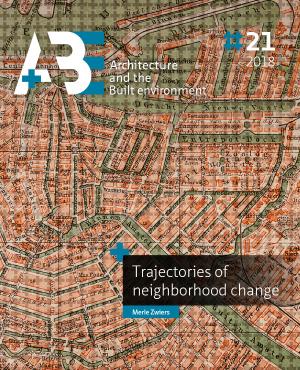
Neighborhoods represent a scale at which inequalities are reflected in the unequal spatial distribution of ethnic and income groups across urban space. In many cities, the rich reside in high-quality neighborhoods in favorable locations while the poor are concentrated in disadvantaged areas (Hulchanski, 2010; Van Eijk, 2010). However, neighborhoods are not static entities and spatial patterns of socioeconomic and ethnic inequality shift over time as a result of processes of neighborhood...
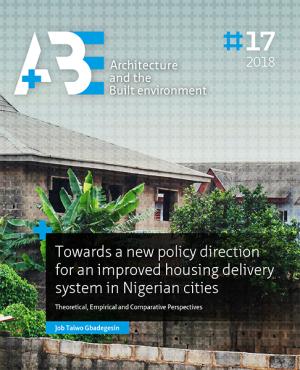
In Nigeria, housing units are not adequate for the entire population, especially in cities (Anosike et al. 2011, Makinde 2014). For instance, the deficit grows at an alarming rate, from about 8 million in 1991 to over 16 million in 2000s (Aribigbola, 2000; Aribigbola and Ayeniyo 2012). The challenges of housing provision are not only quantitative but also qualitative and have to be dealt with in a dual institutional perspective: the formal and the informal sector (Makinde, 2014;...
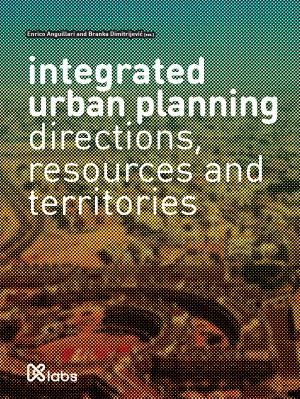
The purpose of this book is to present ongoing research from the universities involved in the project Creating the Network of Knowledge Labs for Sustainable and Resilient Environments (KLABS). The papers published in this book show that the recent and current research in those institutions focuses on the directions of development of IUP, the processes that support sustainable use of natural resources and their application in the Western Balkan and some other European countries. Each essay...
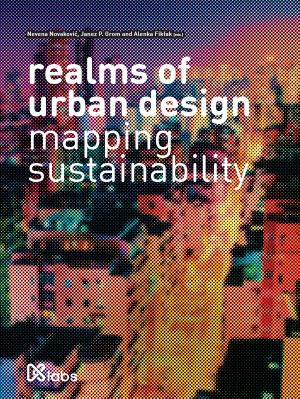
The traditional thematic realms of urban design, such as liveability, social interaction, and quality of urban life, considered to be closely related to urban form and specifically to public space, have long since been recognised as important, and have given the discipline a certain identity. The book Realms of Urban Design: Mapping Sustainability is certainly rooted in this fundamental urban design thinking, but its main contribution belongs to the second part of the book’s title —...
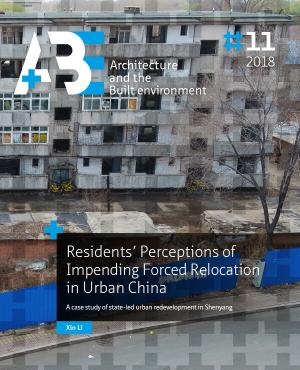
Since 1978, urban redevelopment in China has resulted in large-scale neighbourhood demolition and forced residential relocation, which can severely disrupt established people-place interactions in the demolished neighbourhoods. Urban redevelopment in China has also been criticized by the public and scholars, because the position of the residents in decision-making processes of urban redevelopment is often marginalized. Conflicts have arisen between the residents, local governments and...
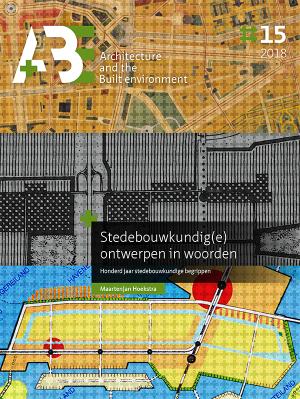
The realisation of an urban design involves many players, such as designers, critics, politicians, journalists, public relations specialists and residents. In order to consult with each other they make use of drawings, but also frequently of words, to be able to interpret the drawn objects in the plans. But are these urbanistic notions used by everyone in the same way? And have there been noticeable changes in their usage or meaning over time? This urbanistic and linguistic...
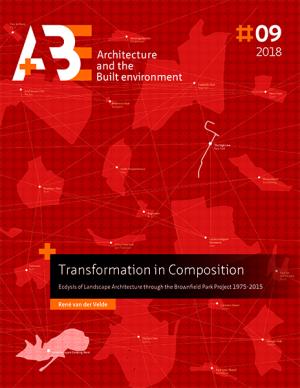
This study enlarges on the notion of composition in landscape architecture. It builds upon the ‘Delft method’, which elaborates composition as a methodological framework from its sister discipline architecture. At the same time takes a critical stance in respect to this framework, informed by recent epistemological developments in landscape architecture such as the site-specificity and process discourses. The notion of composition is examined from a historical and theoretical...
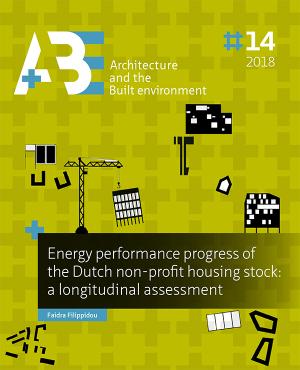
Worldwide, buildings consume a large part of the total energy delivered. In the context of all the end-use sectors, buildings represent the largest sector with 39% of the total final energy consumption, followed by transport in the EU (European Union )1. A considerable percentage of this energy consumption is attributed to the residential sector. The building sector plays a major role in order to meet the energy saving targets set in the EU and in the...
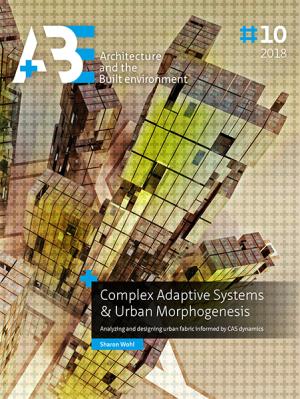
This thesis looks at how cities operate as Complex Adaptive Systems (CAS). It focuses on how certain characteristics of urban form can support an urban environment's capacity to self-organize, enabling emergent features to appear that, while unplanned, remain highly functional. The research is predicated on the notion that CAS processes operate across diverse domains: that they are ‘generalized' or ‘universal'. The goal of the dissertation is then to determine how such...
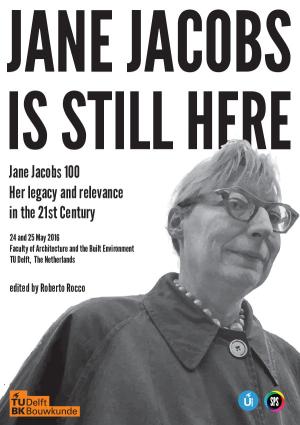
On the occasion of Jane Jacobs’ 100 anniversary, the chair of Spatial Planning and Strategy of the Delft University of Technology, together with the OTB Research Institute for the Built Environment and the Rotterdam Erasmus University College organised a two-day conference on Jane Jacob’s legacy at TU Delft on 24-25 May 2016. This event was complemented one year later by a ‘Jane Jacobs Year’ closing event.
We wished to celebrate the life and accomplishments of one of the most...
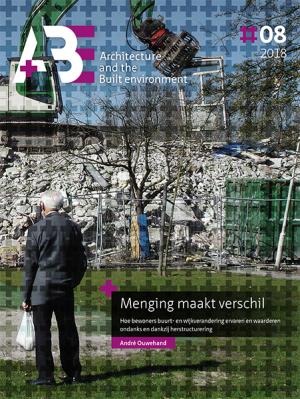
For decades, the new housing estates that were built in the Netherlands after World War II had a solid reputation as neighbourhoods of progress (Reijndorp & Van der Ven 1994). Young households were queuing up for a dwelling in these modernist urban areas, which were known for an abundance of light, air and space, though only higher-skilled and white-collar workers could afford to live there. But with growing prosperity and rising expectations for housing...
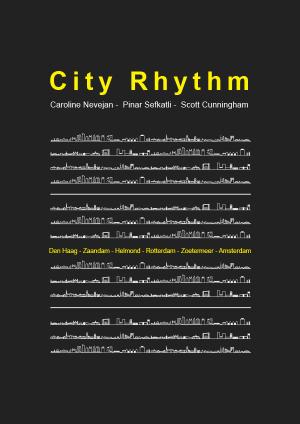
Rhythm is fundamental to life. Rhythm can be perceived in the movement of the sun, the moon and the stars. Rhythm makes our hearts tick and defines our breath, in and out. And even the smallest particle in a microbe is part of rhythmic movements. Rhythm in activities is important for culture, for religion, and for sports, schools and hospitals for example. Yet in social situations, social analyses and in social policymaking, rhythm is not considered as a space of analyses or a space of...
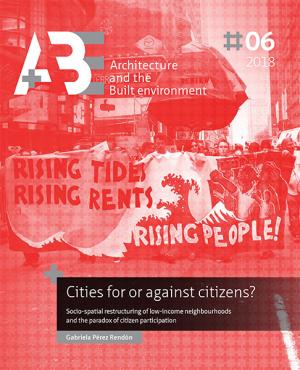
Urban renewal has evolved into an ambitious and sophisticated urban strategy, recognised as urban revitalisation in America and urban regeneration in Western Europe. This new urban strategy, which tends to be area-based and state-sponsored, claims for the most part to coordinate a wide range of resources, partners and public agencies to bring about social, economic and spatial improvements in underdeveloped and impoverished city areas while improving the livelihoods of the local residents....
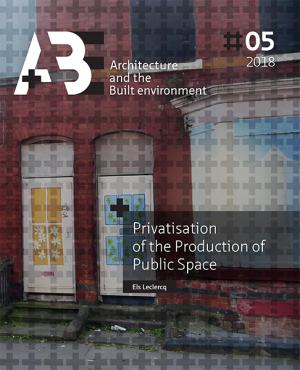
From the 1960s to the 1970s, a large number of Western inner cities went through a phase of severe deprivation due to both a relocation of manufacturing jobs that in turn led to a depopulation, a lack of investment and high unemployment and to suburbanisation made possible by the car. From the 1990’s, urban regeneration strategies were introduced to tackle this inner city deprivation. In the United Kingdom, this ‘urban renaissance’ took place within the new economic and...
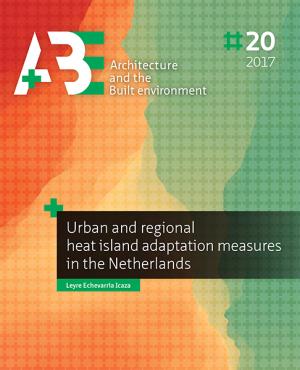
The urban planner´s role should be adapted to the current globalised and overspecialised economic and environmental context, envisioning a balance at the regional scale, apprehending not only new technologies, but also new mapping principles, that allow obtaining multidisciplinary integral overviews since the preliminary stages of the design process. The urban heat Island (UHI) is one of the main phenomena affecting the urban climate. In the Netherlands, during the heat wave of 2006, more...
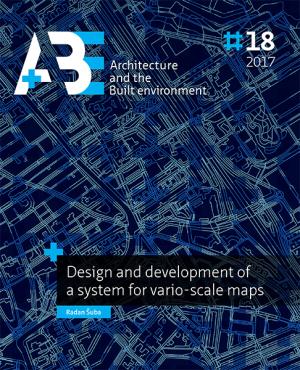
Nowadays, there are many geo-information data sources available such as maps on the Internet, in-car navigation devices and mobile apps. All datasets used in these applications are the same in principle, and face the same issues, namely:
- Maps of different scales are stored separately. With many separate fixed levels, a lot of information is the same, but still needs to be included, which leads to duplication.
- With many redundant data throughout the...
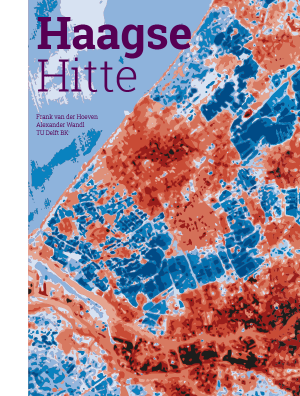
De afgelopen jaren zijn verschillende studies verricht naar het warmte-eiland effect in Nederland. Een studie van TNO (TNO, 2012) heeft voor wat betreft Den Haag de toon gezet. Den Haag zou van alle Nederlandse steden het sterkste warmte-eiland effect kennen. Die beeldvorming heeft gezorgd voor een maatschappelijke en politieke bezorgdheid die het vertrekpunt vormt voor dit Haagse Hitte onderzoek van de TU Delft, mede mogelijk gemaakt door de gemeente Den Haag. Bij het onderzoek hebben we...
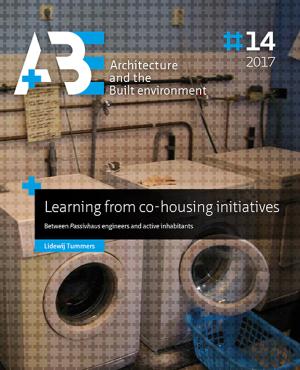
Following the UN world summits on Climate Change (Paris 2015) and Habitat (Quito 2016), most European cities assume an active role to implement internationally agreed goals related to climate change, translated in the so-called New Urban Agenda. At the same time, the urban housing market is increasingly inaccessible for low- and middle-income households. To overcome problems such as failing housing supply and high energy-bills, groups of residents take initiatives to create and manage...
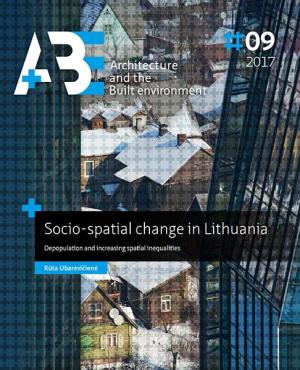
The fall of the Berlin Wall in 1989 signalled a major change for Central and Eastern European (CEE) countries. Despite the significant benefits gained with the ‘return to Europe’, CEE countries have also been faced with large challenges (Gentile, Tammaru, & van Kempen, 2012; Kornai, 2006; Koví¡cs, 1999; Shleifer & Treisman, 2014). They had to transform their political and economic systems and find new ways to establish themselves in the context of increasing globalization,...
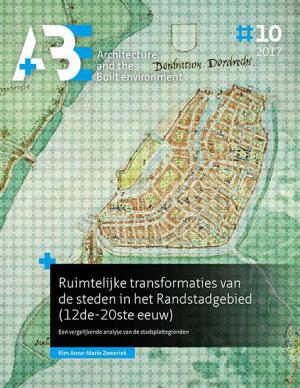
In this study, the transformation of the form of nine cities in the Randstad between 1250 and 1940 in relation to changes in infrastructure is central, namely Utrecht, Dordrecht, Leiden, Haarlem, Delft, Gouda, Amsterdam, Rotterdam and The Hague. Within this time span three periods of great spatial dynamics are identified, namely the period 1240-1450, 1580-1680 and 1870-1940.
From the eleventh century large areas of hitherto inaccessible peatland were reclaimed and made suitable for...
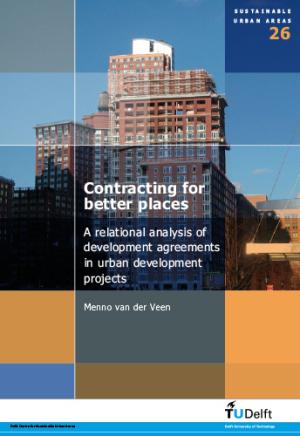
Large-scale urban development projects aim to create better places in underused or deteriorated areas. For their realization, cooperation between planning authorities and market parties is indispensable. Contracting for Better Places focuses on the development agreements that these parties close. It follows from the relational contract theory that, as the projects evolve over time, these agreements have to promote relational values such as trust and flexibility. This work displays four...
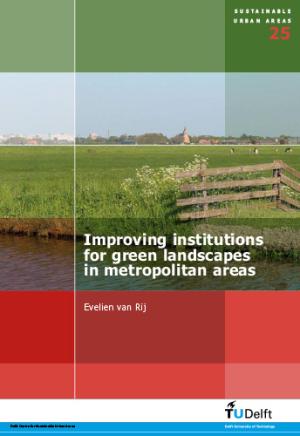
Improving Institutions for Green Landscapes in Metropolitan Areas investigates how various institutions for green landscapes in metropolitan areas work, which problems hamper them, and how these institutions can be improved. Themes, theories and methods have been selected as a response to the case studies. The following themes were formulated: landscape and institutional developments, the market or government dilemma, the network or hierarchy dilemma, the relation between spatial planning...
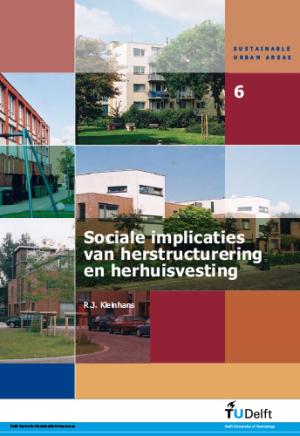
Herstructurering heeft grote gevolgen voor het aanzien en het functioneren van naoorlogse woonwijken. Sloop, renovatie en nieuwbouw van woningen leiden veelal tot omvangrijke verhuisbewegingen uit, binnen en naar deze wijken. In dit boek nemen we de sociale consequenties van deze verhuisbewegingen en de veranderende bevolkingssamenstelling onder de loep. Wat betekent de verhuizing voor de woonsituatie en de wooncarrií¨re van de vertrekkers, de doorstromers en de nieuwkomers? En hoe kijken...
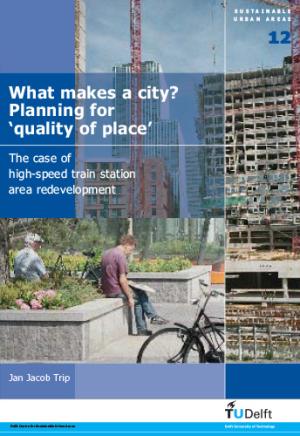
Urban quality is generally considered increasingly important for urban competitiveness. Nevertheless, large urban redevelopment schemes often fail to provide sufficient quality from a user’s perspective. This study therefore investigates the role of urban quality in large-scale urban redevelopment, which is here elaborated in terms of Richard Florida’s concept of quality of place. In a number of extensive case studies, it focuses on prestigious redevelopment projects around the high-speed...
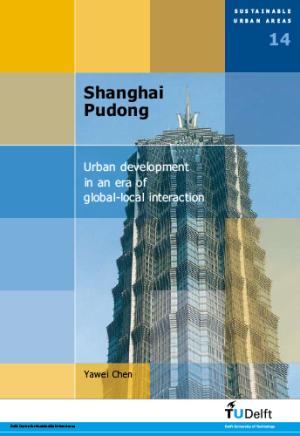
This publication concerns large-scale urban area development in general, and in particular with gaining an understanding of the role played by global-local interaction in shaping the area development strategies in one particularly explosive urban project, the development of Shanghai’s Pudong New Area. The Pudong development provides an extreme example of a situation in which interaction between global and local forces took place in a location whose boundaries had been closed to the outside...
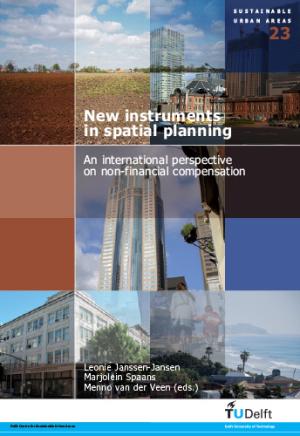
'New Instruments in Spatial Planning' addresses the topic of transferring development opportunities between areas in planning practice by a debate between academics, lawyers and planning practitioners at an international planning symposium in Annapolis, MD, USA and the Van Doorne-Habiforum conference on Transferable Development Rights a year later. The idea of transferring development opportunities between areas is more than only the transfer of development rights. It relates more to...
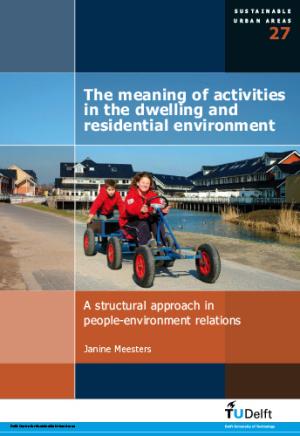
The dwelling is a central setting in people’s everyday life. People use their dwelling and residential environment for a large variety of activities and purposes. The Meaning of Activities in the Dwelling and Residential Environment systematically relates activities, settings and meanings to improve the insight into people-environment relations which is called a meaning structure approach. Over 600 people, living in either a city centre, suburban or rural type of residential environment...
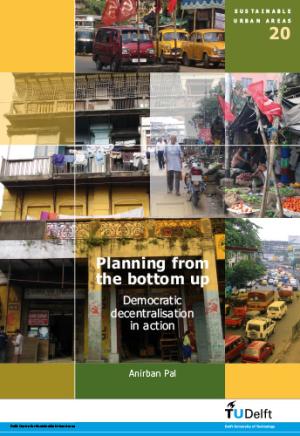
Planning from the Bottom up highlights the gap between the official rhetoric and the political reality of democratic decentralisation and bottom-up planning using an in-depth study of the metropolitan planning process in Kolkata, India. The key issue addressed here is how elected officials at different governmental levels, professional planners, and ordinary citizens interact in the process of metropolitan planning, and which players dominate the process. The focus is on the dynamic...
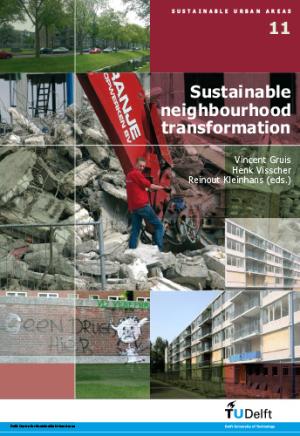
Urban renewal through the large-scale restructuring of post-war neighbourhoods is a major challenge throughout Europe in the decades ahead. Current urban restructuring programmes in the Netherlands focus on the demolition and replacement of the existing housing stock. The motivation behind this strategy is creating a better social mix between ‘poor’ and ‘better-off’ households, to improve the general quality of the housing stock and to create a financially viable restructuring programme....
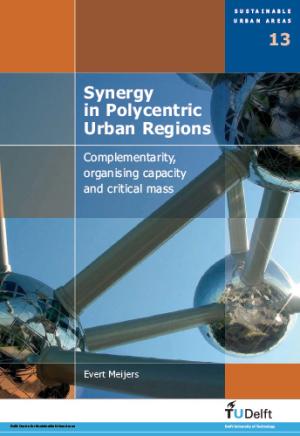
In understanding and explaining the functioning of cities, contemporary urban and regional studies attribute great significance to relationships between cities. This book focuses on relationships between cities in polycentric urban regions (PURs), which are regions containing proximate but distinct cities that are rather similar in size. This book explores whether there are synergies between cities in PURs. In doing so, several widespread assumptions with respect to PURs are questioned. Do...
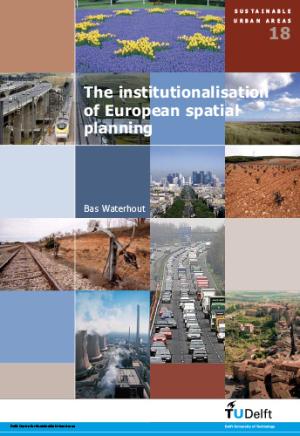
The Institutionalisation of European Spatial Planning aims to clarify the enterprise of European spatial planning. The emphasis of the book lies on the need for a better understanding of the process of European integration in general. It particularly points at the emerging middle range theories that used concepts that were showing similarity to those that academics —those writing about planning— were accustomed to, such as networks, discourses and governance. The focus of this book is...
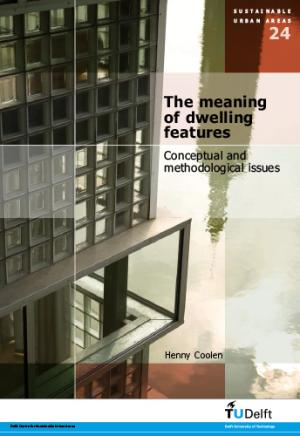
'The Meaning of Dwelling Features. Conceptual and Methodological Issues' relates the research areas of housing preferences and the meaning of a dwelling with each other and with aspects of the means-end approach as applied in marketing research. It results in a conceptual and methodological framework for studying the meaning of preferences for dwelling features. These features are viewed as functional for achieving the goals and values that people pursue. The meaning of dwelling features...
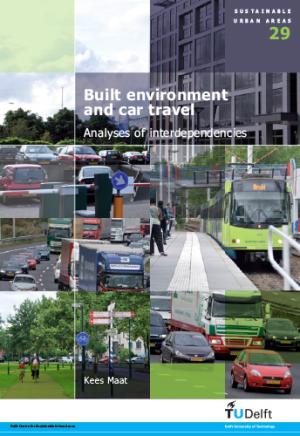
An academic and policy debate has been running in recent decades on whether
and to what extent travel behaviour is influenced by the built environment.
This dissertation addresses the influence on daily travel distance, chaining
behaviour, car ownership, and car commuting. As cars are the dominant mode
of transport, car travel received most attention. The analyses were based on
a comprehensive dataset collected in the North Wing of the Randstad in the
Netherlands. The...
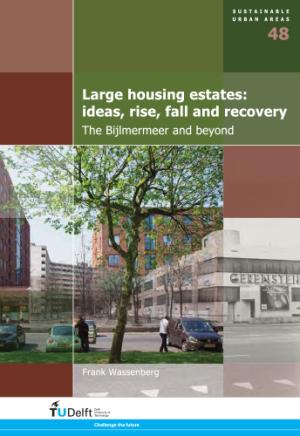
Large housing estates: for some people these three words symbolise all that is wrong in urban planning. Large is wrong, because many people prefer a living surrounding that reflects the human scale. Housing as a single function is wrong, because mixed areas are livelier. And estates are wrong, as these refer to top-down planned areas which the residents themselves have no say in.
Although many such estates function well, others have proved to be in serious problems. The question is...
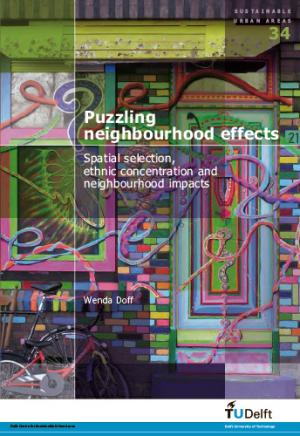
Like other West European countries, the Netherlands are facing a growing uneasiness about its changing demographics. It is within this context that animated discussions concerning immigrant neighbourhoods dominate. The general opinion is that living in such neighbourhoods hinders the 'integration' of immigrants into Dutch society. This book contributes to the academic and policy debate by not only examining the effects of ethnic concentration, but also by finding out how people are sorted...
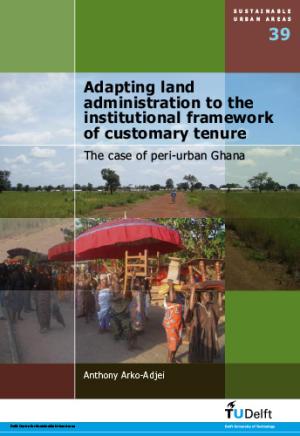
Historical experience in many Sub-Saharan African countries demonstrates that an alternative approach to conventional land administration methods is required to appropriately secure tenure and administer land rights in customary areas. This book is about dealing with the dynamics of customary tenure and with land governance and institutional capacity issues necessary to implement land administration at the local level. Methods for implementing land administration systems at the local level...
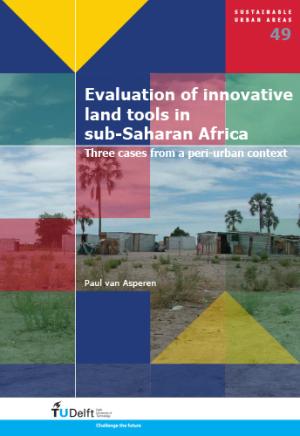
Sub-Saharan Africa is urbanizing rapidly, but most countries lack appropriate tools to manage their urban growth. This creates both risks and opportunities for prospective land holders, resulting in a tangle of insecure land rights and claims under multiple tenure systems. Recently, innovative land tools have been proposed and implemented to formalize land tenure. It is envisaged that tenure security for land holders will increase and in turn contribute to poverty reduction.
...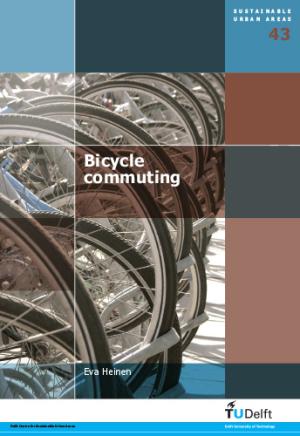
Cycling is cheaper, healthier and in urban environments often faster than other transport modes. Nevertheless, even at short distances, many individuals do not cycle. This thesis aims to explain why commuters vary in their decision to bicycle. Results indicate that the individual (day-to-day) choice to commute by bicycle is affected by personal attitudes towards cycling to work, social norms, work situation, weather conditions and trip characteristics. Additionally, this thesis provides...
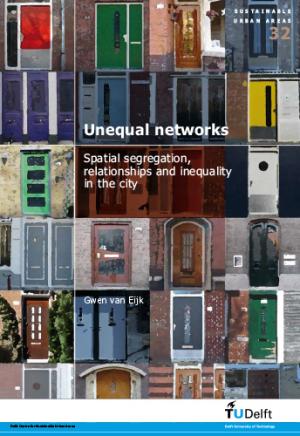
Does the neighbourhood in which people live matter for the resourcefulness of their personal network and thus for their opportunities in life? Do residents of a multi-ethnic ‘problem’ area maintain fewer relationships with fellow residents compared to residents of a homogeneous problem-free neighbourhood? And do ‘diversity-seekers’ who choose to live in a mixed neighbourhood translate their liking for diversity into more mixed networks and more bridging ties? This book brings together key...
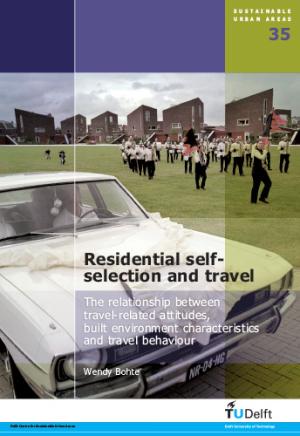
Most Western national governments aim to influence individual travel patterns — at least to some degree — through the spatial planning of residential areas. Nevertheless, the extent to which the characteristics of the built environment influence travel behaviour remains the subject of debate among travel behaviour researchers. This work addresses the role of residential-self-selection, an important issue within this debate. Households may not only adjust their travel behaviour to the built...
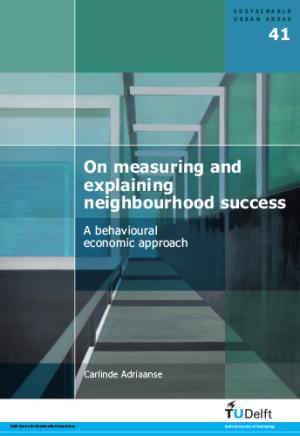
This study combines qualitative and quantitative research methods to explain which factors contribute to a problem-free or problematic functioning of neighbourhoods in general and especially of Dutch neighbourhoods that were built in the first years after World War II. An important part of the book is about the development of measuring instruments. Special attention is given to the development of a risk scale that offers researchers and policymakers the opportunity to distinguish on a...
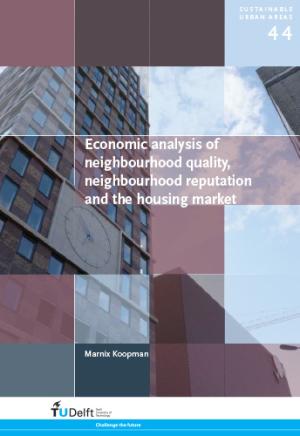
Residents know exactly what their neighbourhood is like. House-seekers, on the other hand, must find out for themselves about the intangible social quality of neighbourhoods. As a simple rule of thumb, neighbourhood reputation can offer them a assessment of neighbourhood quality. In this research, regression analyses are applied to test whether neighbourhood reputations are being used as a proxy measure for neighbourhood quality in residential mobility choices and establishing the price of...
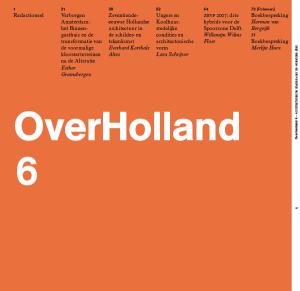
In OverHolland 6, much attention is paid to 17th-century Dutch architecture. Although this is a historical subject, the period remains crucial in order to gain a good understanding of the development of the Dutch city and its architectural structure. It is not so much the historical respect of the cultural inheritance of the Golden Age that plays a role here, but more the inevitable physical presence of the design and building production from this phase of development in the...
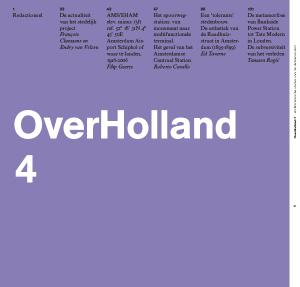
In the fourth edition of OverHolland, the research into the architectonic makeup of the capital is extended to infrastructural projects. Just like other buildings, infrastructural works also manifest themselves expressly in the city as artefacts with an unmistakable physical and material presence. Bridges, dikes, overpasses and tunnels for cars, trains or subways contribute to the built-up identity of the city just as much as public buildings and residential areas. The projects analysed in...
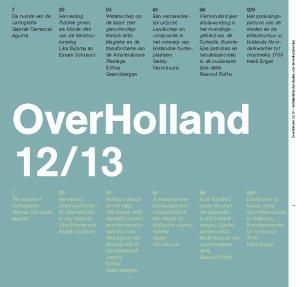
OverHolland 12/13 opens with an article by the Spanish architect Gabriel Carrascal Aguirre on ‘The space of cartography’ — the subject of his dissertation for the Villard d’Honnecourt International Doctorate in Architecture Ph. D. programme in Venice in 2011. He defends the view that cartography should never be treated as a neutral research instrument, for every map is a well-defined reading of reality and as such can form a link between research and design.
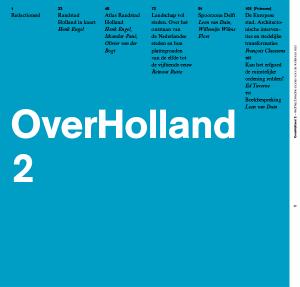
OverHolland presents a wealth of architectonic research regarding the typo-morphological study of the city as well as the issue of architectonic interventions in Randstad cities. The first part of this series published in October 2004 explored this issue. The second part, which lies before you, begins with ‘Mapping Randstad Holland’, a study that has literally ‘mapped’ the urbanisation of the Randstad area since 1850. It is the first step in a study that provides insight into the...
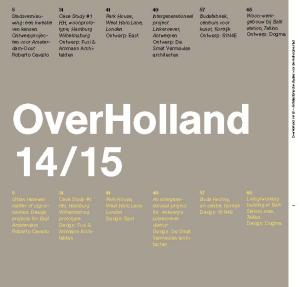
This latest issue of OverHolland takes a closer look at architectural designs, to mark two events in autumn 2013: the publication of the research results of the Renewing city renewal project, an initiative by the architecture firm De Nijl in partnerÂship with Delft University of Technology’s Faculty of Architecture and the KEI knowledge centre for urban renewal (now part of Platform 31); and the DOGMA 11 Projects + 1 exhibition in a temporary pavilion in the grounds of the...
